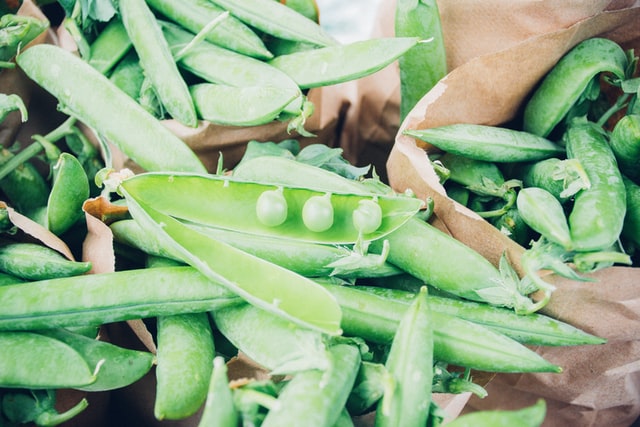Slow Food: A Delicious Movement from Italy to Oregon

Ah, the joys of touring Italy as a solo traveler! I had countless opportunities to indulge in long, leisurely meals and to absorb the lifestyle of the locals. A common sight is multigenerational gatherings. When businesses close for 3-4 hours every afternoon, people go home to eat and be with family. Food is a daily social event, and there is great pride in the preparation and enjoyment of each meal. This lifestyle resonates with my upbringing and the values I hope to foster in my life.
These principles are at the heart of the Slow Food movement. When I began to learn about this grassroots movement, I realized how vitally important these ideas are especially in America where we lead such hurried and fractured lives. I was thrilled to learn that Slow Food was growing and thriving and couldn’t wait to hook up with some local chapters after returning home to the U.S.
It is our decision about what to put on our table and we cannot underestimate how powerful that is.
The movement started in 1989 when Carlo Petrini, journalist and activist, organized a demonstration in response to McDonald’s opening a restaurant by the Spanish Steps in Rome. The citizens were armed with bowls of pasta to symbolize Italy’s rich heritage of food, family and culture. Carlo and his comrades wanted to counteract the global tendency toward a fast, hurried lifestyle, and felt that by slowing down, our planet and all of its inhabitants would be healthier.
He saw the importance of nurturing biodiversity in local ecosystems, food traditions, farmers, and species and proposed that the fast food culture of cookie-cutter dining is detrimental to humans and the planet.
Thus Slow Food International was born; it envisions a world where food production is “good, clean and fair.” The mission is to “prevent the disappearance of local food cultures and traditions, counteract the rise of fast life and combat people’s dwindling interest in the food they eat.”
Slow Food Continues to Grow and Thrive
Slow Food International currently operates in 150 countries, has over 100,000 members, and has national associations in Italy, Germany, the U.S. and Japan. International programs, including Slow Fish, Ark of Taste, Slow Canteens, and Slow Food, have created the following entities in order to further carry out its mission:
- Slow Food Foundation for Biodiversity To coordinate and promote food biodiversity worldwide
- University of Gastronomic Sciences (UNISG) A research and education center
- Terra Madre Foundation A collection of projects to support and protect small-scale producers, chefs, and culinary students
Every two years, Slow Food delegates, movers and shakers, and lovers of food from around the world attend the Terra Madre Salone del Gusto centered in Turin, Italy. This huge conference and street fair is “the most important international event dedicated to food and gastronomy,” and demonstrates the global impact of the Slow Food movement.
When I returned home to the U.S., I could not let go of the fascination with the Slow Food movement. The good news is that Slow Food USA has local chapters in just about every state and county. I was planning to visit my family in Portland, Oregon, so I decided to continue my research on the local level.
In fact, I chose Portland because it is one of those cutting-edge American cities that has an abundance of food, natural beauty and new ideas and just so happens to have a vibrant Slow Food chapter. I had the pleasure of interviewing Antonella Aguilera Ruiz, a board member of Slow Food Portland and a chosen delegate for this year’s Terra Marde del Gusto.
Snail by Snail
Antonella is working hard on the Snail by Snail podcast series which provides interviews with individuals and groups who are making a difference in the Slow Food Movement. Some of the contributors are:
- Stoneboat Farm, a sustainable horse-powered farm producing vegetables outside of Portland
- Adelante Mujeres, “a local non-profit dedicated to the education and empowerment of low income Latina women,”
- Evan Gregoire, founder of Portland Seedhouse, a local farmer who was inspired to preserve resilient seeds when he attended Terra Madre Salone del Gusto as a delegate.
- Gitta Grether-Sweeney, senior director of nutrition for Portland Public schools, who is working toward incorporating slow, healthy food choices in 21,000 school lunches daily.
Taking Action
I asked Antonella what she would recommend to anyone who is interested in learning more about the Slow Food movement and incorporating the principles of good, clean and fair into their own food choices. She deferred to Alice Waters, the famous chef who is a champion for bringing nutrition education and healthy food choices to public schools. Antonella says, “Go to your local farmer’s market; share food with your friends and family. This is a rebellious act in a society that says to hurry up. It is our decision about what to put on our table and we cannot underestimate how powerful that is.”
Next Steps
I am thankful to Carlo Petrini and all of the dedicated activists who are committed to this important social movement. As stated in the Slow Food Manifesto,”We are enslaved by speed,” yet maybe the tide is slowly turning. That gives me hope. It is my dream to attend the Terra Madre Salone del Gusto in 2018 as a delegate. In the meantime, I will keep practicing the Slow Food lifestyle.
Slow Food: A Delicious Movement from Italy to Oregon
Related Reading
- 10 Things You Want to do Before Traveling to Italy
- Travel Itinerary: A Taste of Italy in 12 Days
- How a Visit to Pompeii Transformed My Travel Philosophy for Life
- A Ferrante Guide to Naples
- Why You’ll Want to Visit Florence in the Off-Season
- How One Night in Milan Proved that Solo Travel
Have you traveled to Italy? What were your impressions? Email us at editor@pinkpangea.com for information about sharing your experience and advice with the Pink Pangea community. We can’t wait to hear from you. Photo by Unsplash.









One thought on “Slow Food: A Delicious Movement from Italy to Oregon”